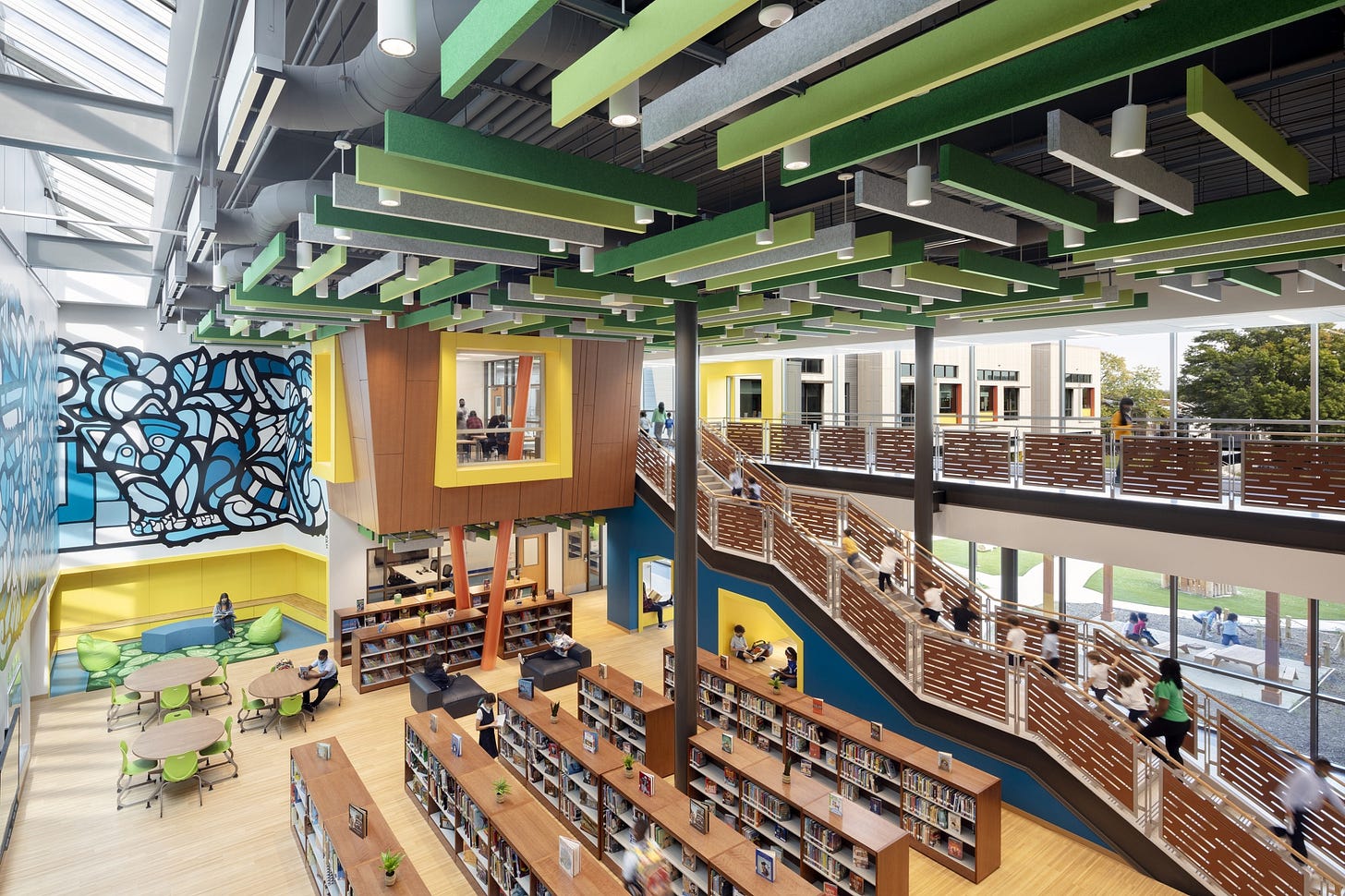🏡 Sustainable Education
How schools are growing their focus on climate change plus how a tech startup is aligning contractors and streamlining construction...
Good morning!
If only I were 10 years younger… Stanford just announced a school for climate change (epic). Schools in DC are also beginning to emphasize the importance of mitigating climate change. Needless to say, there is a growing push to educate the younger generations on being conscious of their climate impacts.
Today’s newsletter will take ~ 3.5 minutes
Trends
Engaging tenants might be the easiest way to achieve net-zero
In an interview this week, Peter Epping, the head of ESG at Hines, reiterated the company’s stance on the climate crisis, suggesting it poses an “existential risk to humanity.” Having acknowledged this fact as a company, leadership and shareholders alike are making the push to accelerate their net-zero transition. How does one of the largest private property owners expedite their shift to net-zero? By engaging their tenants.
Helping tenants to understand the amortization of the upfront costs associated with efficiency upgrades that allow for net-zero achievement is often the biggest part of the learning curve. After the upfront investment, tenants generally pay a lower operating cost and stay compliant with the constantly changing regulations around building code.
Deals & Developments
Washington D.C. unveils two carbon neutral schools
Under DC Public Schools push for modernization and the new funds available from Biden’s infrastructure plan, the two highly efficient schools that were constructed during the pandemic will be soon seeing the addition of solar panels to achieve carbon neutrality.
With real time displays throughout the schools showing the energy consumption of each room in the building, students are encouraged to learn about sustainability and incorporate climate conscious decisions in their daily life.
A university in Sydney announces new Decarbonization Innovation Hub
The University of New South Whales just announced a grant of $15M (AUS) to partner with the Australian government to research and advance decarbonization technologies. Though specifics have yet to be released, the CEO of the new hub has said that it will “will showcase UNSW’s world-class capabilities in decarbonization and serve as a centerpiece for our work in this area.”
Technology
Israeli startup raises $4.5M for AI-driven construction
Firmus uses AI to run analysis before and during construction to uncover design issues that can lead to inaccurate pricing, structural flaws, and project delays by overlaying contractor schedules, blueprints, and other documents.
This technology will prove especially fruitful for those attempting to meet stringent climate goals by ensuring developers and contractors are able to meet certain standards.
Legislation
Israel passed its first ever climate bill
Setting a goal for a 27% reduction in carbon emissions by 2030, the aim is not among the most aggressive, yet does mark a vital step in their stride towards net-zero.
Quick Takes
Stanford’s New School for Climate Change
C40’s Reinventing Cities Competition
Fact for Thought
It’s hard to distinguish carbon neutral from net zero, so sticking to our education theme today, here’s a quick crash course.
As defined by IPCC, carbon neutrality refers to the operations of a building, meaning that the carbon generated by the building in its operations are either non-existent, or offset by carbon sequestration or renewable energy technologies. Net-zero generally refers to all three scopes of emissions, the first being operations, the second being purchases and supplies for operations (i.e. construction), the third scope being indirect emissions that contribute to the value chain of a building (i.e. transportation of the construction company to construction site).
Here’s a good visual provided by Visual Capitalist:
Let us know how we’re doing!




LOVE what Firmus is doing....thanks for keeping me in the loop!